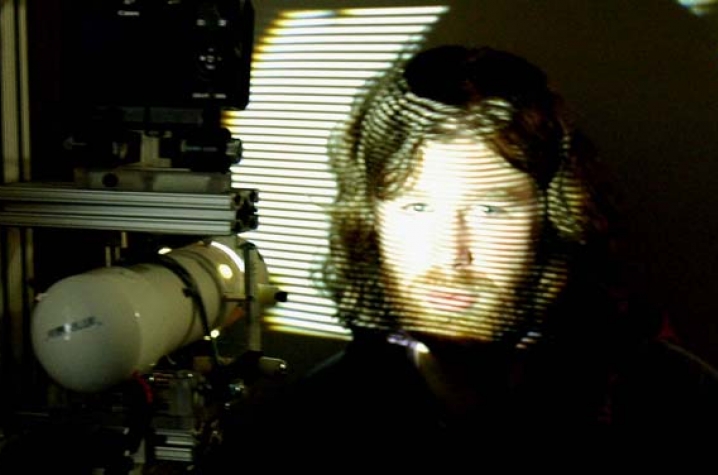Taking the 21st Century into the Primeval Forest
LEXINGTON, Ky. (Oct. 22, 2009) -- The flashlight on his hardhat caught …something… but Eli Crane wasn't sure what it was, until he cast the beam fully on …
…a six-inch-long cricket!
[IMAGE1]"It was tall and these crickets look sort of like spiders, so it startled me," remembers Crane, a University of Kentucky electrical and computer engineering graduate student who earned his bachelor's degree at UK in 2004.
Except that it wasn't a cricket. It was a tailless whip scorpion, a gruesome-looking arachnid that has no stinger.
Fittingly, Crane's Indiana Jones-like encounter with exotic insects and arachnids came during an archaeological expedition to Honduras during July.
Hold it: an electrical engineer, on an archaeological dig?
That's right. Crane, who is studying under UK Professor Larry Hassebrook, spent a couple of weeks this summer looking at the remains of Mayan civilization -- and gathering information for his master's thesis.
[IMAGE2]Crane accompanied Transylvania University Associate Professor Chris Begley (who identified the tailless whip scorpion) on the trip to Honduras, armed with a portable scanner developed by Hassebrook and Crane and designed to render three-dimensional images.
It was Crane's first trip into the Honduran jungle that envelops the Rio Platano. Begley is an old hand at scouring remote Latin American sites with archaeological value.
"The first day we hiked 10 miles to get to the river, up and down steep hills. The countryside looked a lot like Kentucky, until we reached the jungle," Crane recalls.
[IMAGE3]Once they entered the jungle's vegetation, the archaeological party -- Begley, Crane, a guide and some equipment carriers -- relied on sunlight that illuminated the jungle only while the sun was high. There was light -- or there wasn't, and the darkness came abruptly.
But that was OK, because it gave Crane a chance to assemble his portable scanner and a tripod that held it in position while it collected information from artifacts.
The scanner developed in Hassebrook's lab -- and being developed for the marketplace -- projects a pattern of lines of light on an object in ways that capture the object's contours, nooks and crannies. The scanner grew out of Hassebrook's two decades of intensive experimentation with a scanning method called "structured light."
[IMAGE4]"We found you could use patterned structured light to get three-dimensional information about a pattern," Hassebrook said. The techniques have led to newly developed scanning devices for palm- and fingerprints, faces and other purposes.
In the cave, Crane and Begley were gathering visual information about ancient stone artifacts.
Outside the cave, Crane used the scanner to capture images of petroglyphs carved into stones alongside the river. Most of the outside work was performed at night, when the scanner could function effectively.
Each scan would take between 15 and 30 minutes. The data was recorded on cards in a digital camera; this fall, Crane is developing the algorithms computers will use to interpret the data and render 3-D images.
Begley sees great value in the scanner prototype Crane tested in Honduras.
[IMAGE5]"This system allows you to record stuff and have a good three-dimensional map of it without removing the artifacts from the site. This means archaeologists can have a potential zero impact on archaeological sites," Begley said.
"I've put out some feelers to other archaeologists, and they're all interested and excited by the potential," Begley added.
Begley said he hopes Crane will accompany him on an expedition next June into the Andes Mountains in Peru for further tests of the equipment.
Crane said he was up for it -- despite the critter encounters in Honduras.
"We saw tons and tons of spiders. There were lots of bats. We saw a jaguar's paw print one day when we were hiking through the jungle -- it was about the size of Chris' hand," Crane said.
And one really big scorpion.









